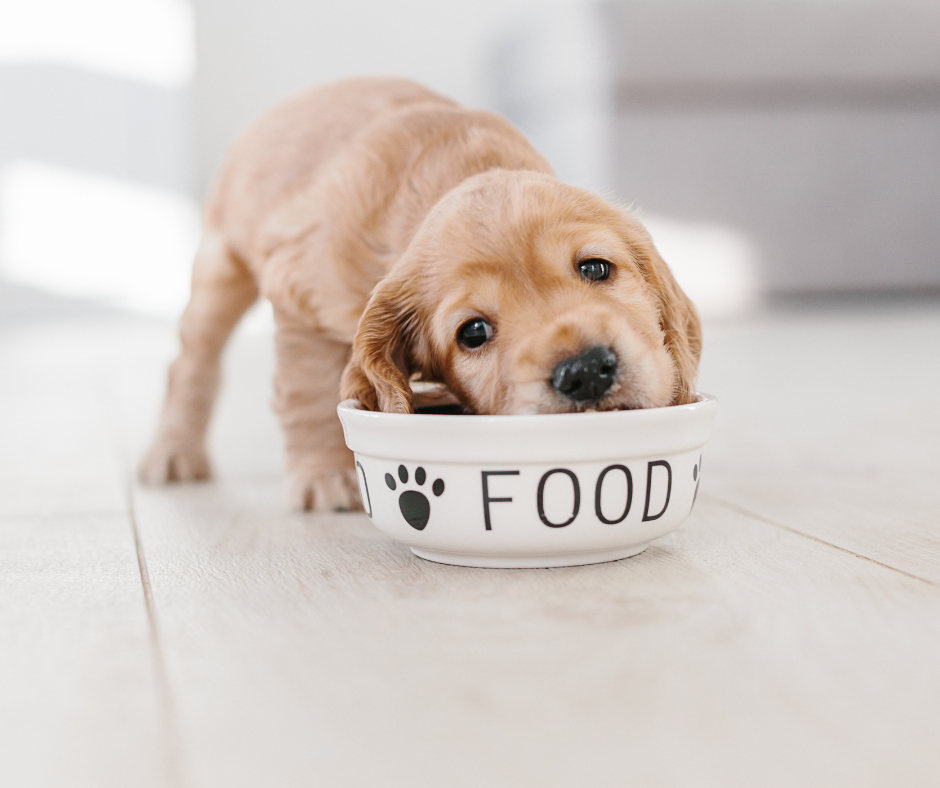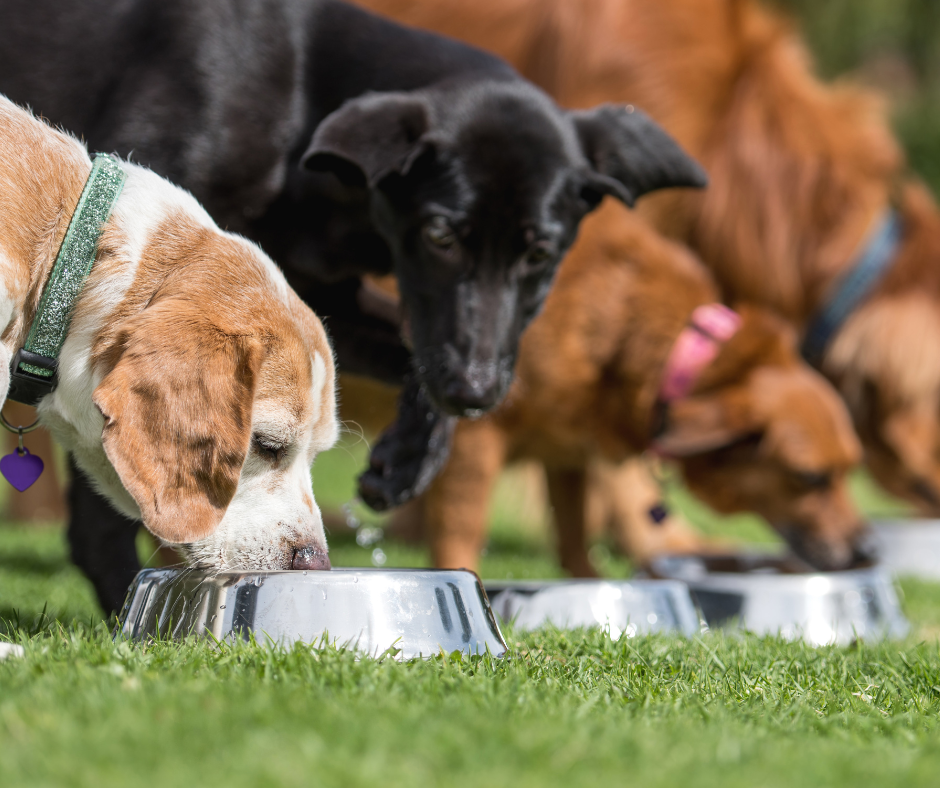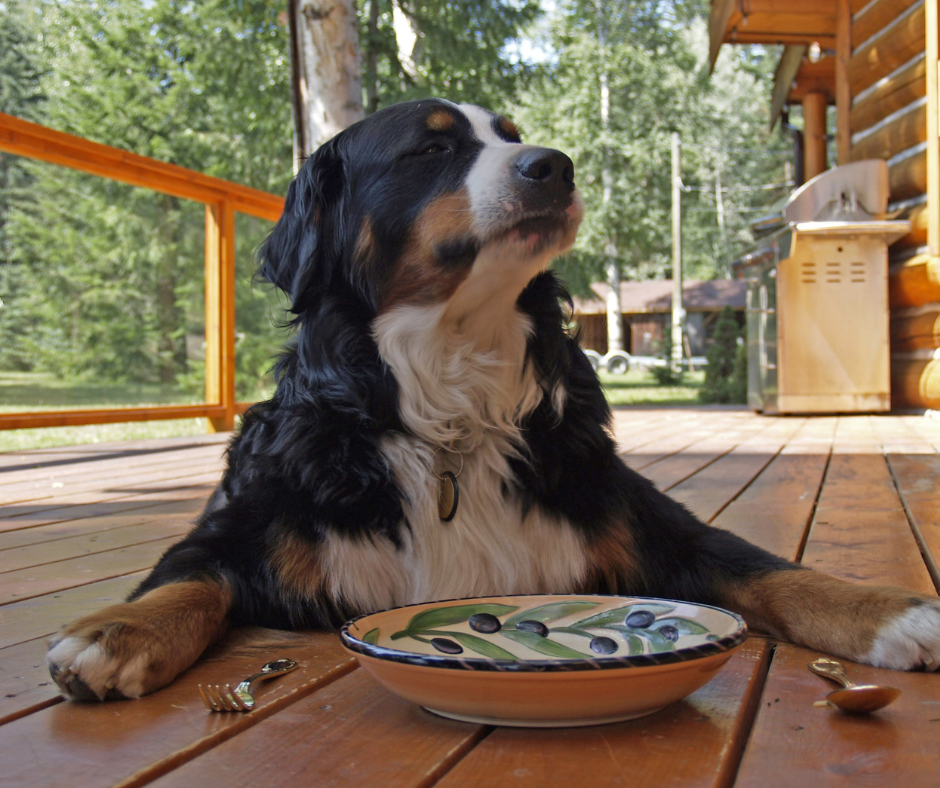
Step One- Weigh Your Dog
First and foremost, you need to know how much your dog weighs in order to determine how much to feed them. For the purpose of this blog article, we’re only going to focus on adult dogs >12 months of age. Puppies have different requirements, and you can keep an eye out for a separate article on feeding puppies in the future.
Weighing your dog might seem obvious, but many people don’t have the means to do so easily. There are resources available for those who either (1) don’t have a scale at home or (2) have a giant breed dog who can’t be safely picked up. Your local vet may have a scale in the waiting room- try reaching out to them and see if they will let you swing in for a quick weight. You should be able to do it yourself and not even bother the front desk staff. Another option is to check your local pet stores. Many of them, from chains to independent stores, will have a scale for you to use. These should absolutely be free, and you can go whenever they are open. If you’re physically able to pick up your dog and you have a standing scale at home, you can step on it while holding your dog, note the weight, then put your dog down and weigh yourself again. The difference between the two is your dog’s weight!
It’s important to weigh your dog around the same time of day each time, and ideally prior to feeding them. This will give you the most accurate trend. Be sure to write the trend down so you can look back or have a record for any pet professionals you choose to work with.
The frequency with which you weigh them is also important. I personally recommend weighing every two weeks, or at most every month. If you have a short-haired dog, you can often notice minute changes in weight very quickly, however if you have a long-haired dog, it can be easy for them to lose or gain a significant amount of weight before you ever see it. This poses a problem because being either overweight or underweight comes with its own set of health risks.
Once you know your dog’s weight, you need to then determine if they’re actually at an appropriate weight or not. If they are, that’s great! If they need to gain or lose weight, consider how much that should be and what their goal weight is. You can speak with a pet professional about this or even look up ‘canine body condition score’ images online and compare the photos to your own dog.
Step Two- Consider Age & Activity Levels
Now that you know how much your dog weighs, it’s time to think about how much activity they get daily. Energy expenditure is variable because activity levels can change with age, season, and the daily ebb and flow of life. A senior dog who lives on a farm and walks around the property for several miles daily might have the same activity level as a 3 year old dog who is sedentary and altered. Let’s get into some details.
- Senior dog/low activity- Senior dogs tend to have a slower metabolism and therefore may need less calories than a younger dog who is the same weight. Low activity applies to dogs who are mostly housebound or have <1 hour of activity daily such as a short leisurely walk daily.
- Young altered dog/moderate activity- Dogs who have been altered have a slightly lower metabolism than those who are intact. Moderate activity generally means an average of 1-2 hours of activity daily or who goes to daycare 1-2x per week.
- Young intact dog/high activity- Intact dogs will have a somewhat higher metabolism than those who have been altered. High activity may mean dogs who go for several long walks daily, lengthy hikes several times per week, or to daycare 4-5x per week.
- Working dogs- These dogs are expending tremendous amounts of energy doing work such as herding or agility. These dogs need to be very closely monitored to ensure they aren’t losing weight during working seasons or gaining weight during the off-season.

Step 3- Combine
Now that you have your dog’s weight written down, their body condition score evaluated, and their activity level in mind, you can start doing the math. Don’t panic- this math isn’t that difficult. All you need to do is a little multiplication and percentages. It’s also important to remember that these numbers, categories and recommendations are generalized and should be tailored to the dog in front of you. Each and every dog is an individual, and at the end I’m going to give you some examples that will highlight that.
Here is the math: take your dog’s weight in pounds and multiply it by the percentage of body weight you want to feed them. That will give you the amount of food in pounds that they should eat in a day. Not so difficult, right? But how do you know what percentage of body weight to feed? I’ll tell you…
- 2% of body weight– dogs who are most appropriate for this category are your senior dogs, low activity dogs, and dogs who need to lose weight.
- 2.5% of body weight– this is pretty standard for dogs who have moderate activity, those who are younger but altered, and those who are the perfect weight that just need to maintain it.
- 3% of body weight– here we place dogs who are intact, higher activity or need to gain weight.
- 3.5%+ of body weight– anywhere from 3.5% to upward of 5% might be the amount needed to feed a working dog. Each dog is unique and as mentioned, they need frequent monitoring.
Let’s do some examples so you can see it all written out.
- Your dog weighs 60lbs with an ideal body condition score, and they are a neutered male with moderate daily activity. You decide that they need to eat 2.5% of body weight based on age, being altered, and being a good weight.
- In order to multiply something by a percentage, you have to first divide that percentage by 100. Or, you could just move the decimal point to the left by two spaces which is the same thing. So 2.5% / 100 = 0.025.
- Next, you multiply their body weight by that result. That would be 60lbs x 0.025 = 1.5lbs.
- I don’t like to work with food in pounds, because once I am dividing that up into the separate ingredients (check out my blog on feeding models) the larger numbers are harder to use. I prefer to work with ounces, which is much easier. So now I multiply that amount in pounds by 16, because there are 16 ounces in a pound. It looks like this: 1.5lbs x 16 = 24oz.
- That’s it- this dog should eat 1.5lbs, or 24oz of food per day.
- You have another dog who weighs 30lbs. She is intact and also has moderate activity. Her body condition score is a little thin and you think she needs to gain a few lbs. You decide that although these different factors fit in several categories, she should eat 3% of her body weight based on the overall picture of her needs.
- 3% / 100 = 0.03
- 30lbs x 0.03 = 0.9lbs
- 0.9lbs x 16 = 14.4oz
- This dog should eat 0.9lbs, or 14.4oz of food per day.
- You have one more dog who is a neutered senior and pretty sedentary due to arthritis. He weighs 45lbs but should lose a couple of pounds due to being overweight, and you decide that feeding 2% of body weight is most appropriate for this dog.
- 2% / 100 = 0.02
- 45lbs x 0.02 = 0.9lbs
- 0.9lbs x 16 = 14.4oz
- This dog should eat 0.9lbs, or 14.4oz of food per day.
It’s important to notice here that the 45lb dog and the 30lb dog should be eating the same amount of food per day, because of their differences in age, activity level and weight gain/loss needs. So always consider all of these factors when determining how much to feed your dog.

A Few Extra Tips
There are a couple of trends I’ve noticed over the years when it comes to weight based feeding. The first is that smaller dogs tend to have a faster metabolism particularly when they are younger, and may need closer to 2.5-3% of body weight even when they have somewhat lower activity. The opposite is true of larger dogs, who tend to maintain a good weight on 2.5-2% of body weight based feeding. Again, this is just a general trend you should feed the dog in front of you based on their individual needs.
Another important point I want to make is that you have to remember that any changes in the food, season or activity level warrant another look at how much you’re feeding. If you were feeding a ground meat that was 20% fat, and you changed to feeding one with 3% fat, then that dog is going to lose weight if you don’t feed them more food. Now, if that was the plan all along, then that’s perfectly fine. However if not, then you’ll be alarmed when a few weeks go by and all of a sudden you’re being poked by their ribs when you lean down to give them a pet. So always always always be monitoring, evaluating and adjusting as needed.
Just to Complicate Things….
There is another way to feed if you reeeeeeeally want to be more scientific and thoroughly enjoy math, and that is feeding by metabolic energy. The streamlined explanation is that you take your dog’s weight in pounds and convert it into kilograms by dividing it by 2.2, then multiply that number by the power of .75. You need a scientific calculator to do this, or a program that will do it for you. Once you have that number, you then multiply it by their energy factor, which will tell you the amount of calories to feed per day. The energy factor can range from 80 to 130 depending on their age and activity levels. Here is the breakdown:
- <80: Sedentary dog, senior dog or very low activity dog/housebound dog.
- 80-95: Middle aged/older dogs with low activity.
- 95-110: Younger dog or those with more activity, often intact dogs.
- 110-130: Working dogs, extremely active dogs and intact dogs.
- >130: Puppies and incredibly active dogs.
You can see that these numbers have more of a range, and the number you get at the end is calories rather than total weight of food. This is nice to have if you decide that you want to make a spreadsheet for every single food item you put in your pet’s dish and feed it down to the calorie. However, for the most part this is unnecessary and something that we generally don’t do for ourselves, so I’m not sure why we would want to do it for our dogs. There are special circumstances where I do think it can be helpful, however in general I feel that most dogs do well being fed by body weight. Here are some examples so you can see the numbers jiving:
- 65lb dog who is low activity, neutered and at a good weight. Based on this ingo, you choose to use a metabolic energy factor of 95.
- 65lbs / 2.2 = 29.5kg
- 29.5kg ^ .75 = 12.6
- 12.6 x 95 = 1203 calories to be fed per day.
- 60lb dog who is two years old, intact, high activity and a good weight. You decide to use an energy factor of 120.
- 60lbs / 2.2 = 27.27kg
- 27.27kg ^ .75 = 11.9
- 11.9 x 120 = 1432 calories to be fed per day.
In these examples, you can see that the dog who weighs less but is intact with a higher activity level is going to be fed more than the dog who weighs more but is sedentary. So again, it all depends on the individual dog and their needs. I swear it’s not as crazy as it seems. Once you’ve done the math a few times, you get the hang of it. I personally enjoy doing weight-based feeding at this time, but I always remember that there is a time and a place for caloric feeding when necessary. Happy snacking!



